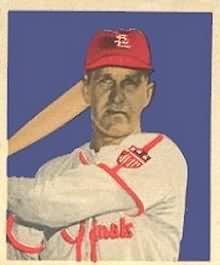A
story in Wednesday’s
Houston Chronicle, headlined “Suspect surrenders with help of Quanell X,” reported that a convicted felon wanted for the attempted murder of a police officer contacted the
Chronicle on Monday. Elliott Nathaniel Guerrero apparently did not want to complain that his Sunday paper wasn’t delivered; instead, according to the
Chronicle, he wanted to proclaim that he had no pistol on his person when he is alleged to have pulled a weapon on, and possibly fired at, Houston police Sgt. J.R. Chase during a June 16 incident at a north Houston apartment complex.
Guerrero did allow that he had been shot in the leg that day, by Sgt. Chase and without provocation, even though he promptly fled on foot and remained at large. He was crying at the time,
according to the Chronicle (crying, that is, during his “contact” with the newspaper, not when he caught one in the leg).
And so,
according to the Chronicle:
A Chronicle reporter urged Guerrero to surrender, but the man said he feared police would retaliate. The reporter referred him to Quanell X, who had previously escorted suspects to police custody, and alerted police.
Quanell X met Guerrero at a gas station on the Katy Freeway about noon Tuesday, and Guerrero hopped into a Hummer H2 driven by a member of Quanell X's New Black Panther Party.
It’s not clear whether the
Chronicle reporter who referred Mr. Guerrero to Mr. X is the same one who wrote the story, and why the
Chronicle didn’t see fit to identify the anonymous scribe, since he or she plays a major role in the very story the paper is peddling.
Whatever the case, you’ve got respect the writer’s eye for detail: The wanted man, despite his leg injury, “hopped” into the New Black Panther Party-chauffeured H2 Hummer (which apparently is not just any ol’ Hummer) and was ushered off to meet his fate.
After reporting on the newspaper’s hand in the hooking-up of Mr. Guerrero and Mr. X, the story takes an odd turn into an uncharted meta-dimension of journalism by noting that a couple of years ago the Houston Police Department implemented a policy
disallowing private citizens from arranging the surrender of suspects or fugitives wanted by the police.This policy change followed Mr. X’s June 2004 arrest for evading arrest when he failed to stop for police officers as he was ferrying to police headquarters a suspect wanted on suspicion of shooting and wounding a police officer. (Sr. X was given a small fine, a brief probation and community service.)
So: The unnamed
Chronicle reporter recommended Mr. Guerrero to Mr. X to facilitate his surrender, despite the police department policy (which, the paper noted, may not be so hard-and-fast, as Guerrero was the second fugitive X has handed over to the cops since his own arrest), thus setting into motion the events that led to the headline, “Suspect surrenders with help of Quanell X.”
Therefore, the question: Did the
Chronicle set X up to knock him down?
Nah, of course not. In fact, the paper helpfully supplied these stats attesting to X’s prowess when it comes to handing over the wanted men of Harris County:
Counting Guerrero, Quanell X has facilitated the surrender of 23 fugitives …
Like other Houstonians, we have long wondered about the point and purpose of Quanell X, about how he makes a living when he seems to spend all day and night out shepherding various allegations and accusations of injustice into the public domain or bringing another fugitive down to police headquarters, about how he can command media attention at the drop of a dime (or however much a phone call costs these days) and now even rates
referrals from the leading daily newspaper, and about how the media never seem to question his pecuniary motives or how he can afford an H2 Hummer and those classy suits he always wears, even when it’s 99 degrees outside (and the man does look sharp in a suit).
We won’t go into detail in repeating the rumors of case-running or bounty-hunting, although we wouldn’t particularly have a problem with those activities, because we realize, as the late great Dewey Compton used to say, “No matter what happens, folks gotta eat.” We know from experience that “selfless humanitarian” is not a remuneratively satisfying job.
Still, it would be nice — not to mention journalistically sound — if the media made some attempt to disclose Mr. X’s interests in the various media-hyped endeavors in which he engages (we mean, of course, any interest beyond his obvious selfless humanitarianism), or, in lieu of that, exercised more discretion in relaying, unchecked, his various pronouncements (we’re still waiting for some resolution of the incendiary charges that X launched about the Houston Fire Department a while back).
Mr. Guerrero did not look to be the sort who could pay for X’s escort services, so perhaps X performed a real public service in hauling Guerrero to the cops (in style!). Or perhaps X viewed it as a favor to the
Chronicle reporter, who now may be in line to supplant
this guy as X’s No. 1 media enabler. Or perhaps X just wrote off his time as a loss leader for the advantageous publicity, although it’s not like he really needed the publicity that day, as he was all over the television news and newspaper for “arranging” a news conference with the families of two of those hard-eyed youngsters accused of capital murder in a recent fatal carjacking---a misstep by the youngsters, so to speak, that X conveniently blamed on the undue influence of other youngsters also charged in what the
Chronicle correctly described as a “brutal crime spree.” (And what were X’s arrangements, for making this “arrangement” that conveyed absolutely no "news"?)
These are simply rhetorical questions, ones the media will never get around to answering, primarily because of editors’ fears that in poking too indecorously at the myth of Quanell X they risk the prospect of X and his New Black Panther Party minions staging a protest outside their homes, the way they did a few years ago outside the home of City Councilman Michael Berry, a distraction that, at least in the daily newspaper’s case, would detract from the relentless pursuit of that elusive Pulitzer Prize.
Our humble suggestion is that the
Chronicle cut out the middleman and allow its reporters to get into the surrender-facilitation game. A good first-person Hechtian yarn every now and then — “How I Brought in Elliott Nathaniel Guerrero” — might be just the cure for those flagging circulation numbers.



